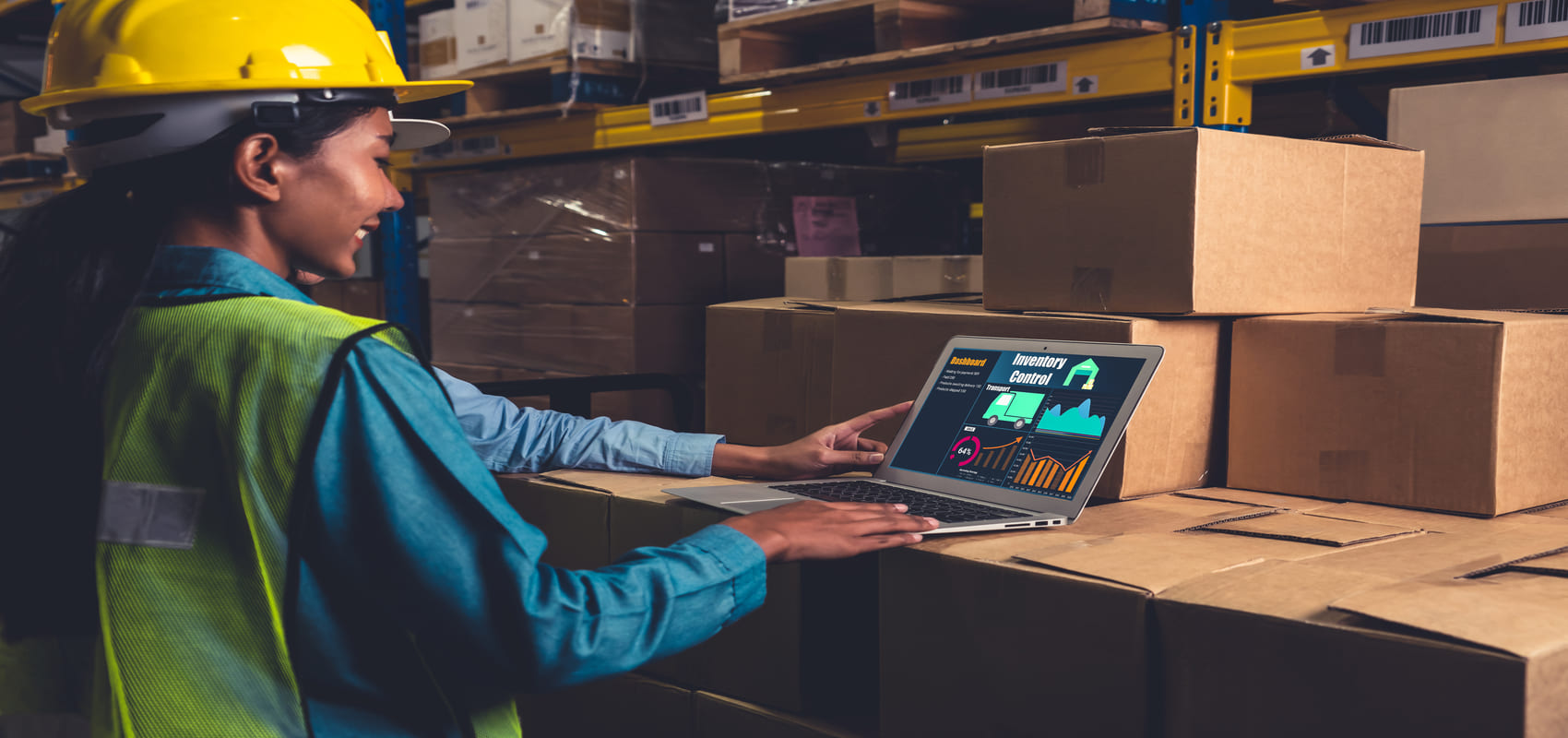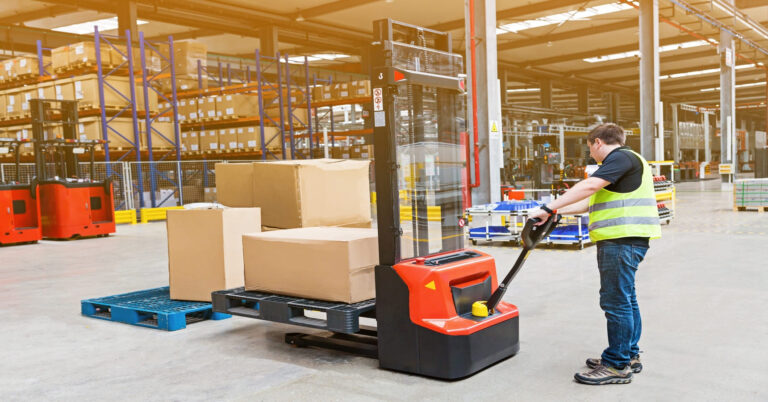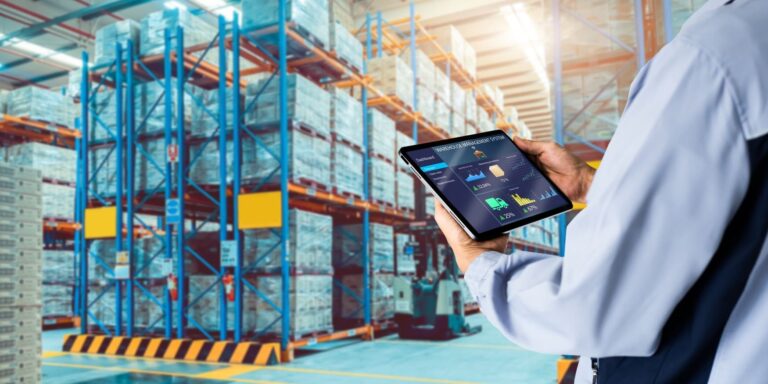Key Trends Shaping the Future of Warehousing and Warehouse Management

The warehousing industry is rapidly evolving as new warehouse technology and shifting consumer demands transform operations. Advanced automation (robots, AMRs, conveyor systems), smart analytics, and green initiatives are among the top warehouse trends driving this change. For example, cloud-based warehouse management systems (WMS) are now seen as a critical component in the future of warehouse management, enabling real-time data access and flexibility. In this article, we examine the key trends – from AI-powered systems and e-commerce fulfillment to sustainability and scalability – that will define the future of warehousing services and help businesses stay ahead.
1. Automation and Robotics: Driving Warehouse Efficiency
Automation and robotics are among the most important warehouse automation trends. Autonomous mobile robots (AMRs), automated conveyor systems, and AI-driven software are streamlining tasks like picking, packing, and sorting, which reduces errors and speeds up throughput. Modern warehouses increasingly integrate these tools with Warehouse Management Systems. In fact, robust WMS platforms now act as the digital backbone of fulfillment centers, combining real-time data from robots, sensors, and inventory systems to optimize workflows and resource allocation. Adopting these technologies drives productivity and helps companies meet the pace of global e-commerce.
Key warehouse automation technologies include:
- Autonomous Mobile Robots (AMRs): Self-guided robots that quickly transport inventory through warehouse aisles and across work cells.
- Automated Storage and Retrieval Systems (AS/RS): Dense, grid-based storage systems where robotic cranes or shuttles store and fetch bins, maximizing space usage.
- AI-powered WMS software: Cloud-based management systems that use artificial intelligence to forecast demand, control inventory in real-time, and orchestrate equipment and labor.
These warehouse automation trends – from robotics to intelligent control systems – continue to accelerate, making warehouses faster, safer, and more reliable.
2. E-Commerce and Omnichannel Fulfillment
The boom in online shopping is transforming warehouse operations. Warehouses now handle a much higher volume of smaller, frequent orders, creating pressure for fast, accurate fulfillment. To meet this demand, companies are adopting new distribution strategies. For example, micro-fulfillment centers (small urban warehouses) bring inventory closer to customers for ultra-fast delivery, and cross-docking techniques move items directly from incoming to outgoing trucks to speed processing. Advanced warehouse technology – including automated sortation and real-time tracking – helps manage this surge of e-commerce orders, improving order accuracy and customer satisfaction. Cloud WMS and omnichannel platforms tie these efforts together, ensuring inventory is visible and managed seamlessly across stores, online channels, and fulfillment centers.
3. Sustainability: Adopting Green Practices
Environmental sustainability is now a key warehouse trend. Many facilities are being equipped with green technologies – energy-efficient lighting, solar panels, electric forklifts, and eco-friendly building materials – to reduce energy use and carbon emissions. Warehouses also implement recycling programs and switch to sustainable packaging to cut waste. These measures often save money in the long run by lowering utility costs and waste disposal fees. In short, eco-friendly operations not only help the planet but also improve the bottom line, making sustainability a win-win in the future of warehousing.
4. Data-Driven and Smart Warehouse Technology
Data and connectivity are central to the warehouse of the future. IoT sensors, cloud platforms, and AI-powered analytics turn raw operational data into actionable insights, enabling smarter decisions at every level. This smart warehouse approach lets managers forecast demand, prevent stockouts, and optimize inventory placement. Modern WMS solutions now integrate these data sources – from barcode scanners to automated equipment – to coordinate activities across the facility. For example, cloud-based WMS platforms centralize inventory and order data from multiple locations, so businesses can adjust operations on the fly and manage all sites from one system. In effect, advanced warehouse technology (AI, IoT, cloud computing) creates a flexible, information-driven warehouse that continuously adapts to change.
5. Flexibility and Scalability: Adapting to Change
In today’s volatile market, flexibility and scalability are must-have warehouse trends. Cloud computing and modular facility designs mean warehouses can grow or shrink capacity as demand dictates. With scalable cloud-based WMS and modular racking or automation, a company can quickly scale up during peak seasons or down during slow periods without major capital investment. Additionally, new business models like Automation-as-a-Service (AaaS) allow companies to lease robotics and automation on demand. These subscription models give even small and medium warehouses access to cutting-edge technology, letting businesses add or remove automation resources easily and manage costs effectively. Overall, having a flexible, scalable setup helps warehouses stay resilient, no matter how market conditions shift.
6. Human Expertise and Technology: The Perfect Combination
Despite all these innovations, human expertise remains essential in the warehouse. The future of warehousing envisions a blend of skilled workers and smart machines. Collaborative robots (cobots) are a great example: these machines work safely alongside people, handling repetitive or heavy tasks so human staff can focus on problem-solving and quality control. This human-plus-technology model boosts safety and efficiency. By leveraging worker insight along with automation, warehouses can adapt to unexpected issues, train for new processes quickly, and continuously improve operations. In essence, the next-generation warehouse is both automated and human-centric.
Conclusion
As we look to the future of warehousing, several key themes emerge. Adopting advanced automation, smart technology, and sustainable practices will be essential for any warehouse. Key takeaways include:
- Advanced Automation & AI: Robotics, AMRs, cobots, and AI-driven systems will continue transforming operations and addressing labor challenges.
- Smart, Cloud WMS: Cloud-based Warehouse Management Systems provide real-time visibility, flexibility, and seamless integration across channels.
- Sustainable, Green Facilities: Energy-efficient technologies (like solar panels) and waste reduction strategies are crucial for cutting costs and carbon footprint.
- E-commerce Fulfillment: Micro-fulfillment centers and agile distribution networks ensure warehouses can meet fast-growing online order demands.
By focusing on these warehouse trends – automation, data intelligence, and sustainability – businesses can prepare their operations for the future of warehouse management and warehousing. Embracing these trends will make warehouses faster, smarter, and more adaptable, ensuring they remain competitive in a rapidly changing industry.
You may be interested in

Common Misconceptions in Warehousing: Myths vs. Reality
Warehouses are integral to today’s supply chains, yet many still see them as simple storage space. In reality, efficient warehouses manage inventory, fulfill orders, coordinate cross-docking, and even perform value-added tasks like packaging or assembly. This has become even more critical as global commerce grows – for example, about 6.6 million Americans worked in transportation […]

Improve Supply Chain Efficiency with Smarter Warehousing
Efficient supply chain management is essential for any business aiming to remain competitive in today’s fast-paced market. In this article, we will explore how optimizing warehousing plays a crucial role in enhancing supply chain efficiency. From inventory management to technological advancements, we will cover various strategies that can help streamline operations and improve overall performance […]

Importance of Warehouse Location: Optimizing Efficiency, Costs & Delivery
Choosing the ideal warehouse location is a strategic cornerstone for any logistics or freight business. A strategically sited warehouse drastically reduces shipping times and costs, boosts customer satisfaction, and strengthens competitiveness. In fact, strategic warehouse site selection can lower total logistics costs by 10–30% and improve delivery times by 15–40%. For example, locating warehouses near […]
Ready to streamline your warehousing needs?
Request a quote today and discover how OLIMP's tailored solutions can optimize your operations